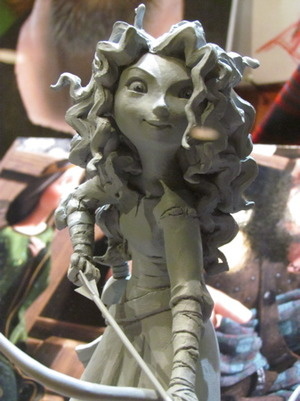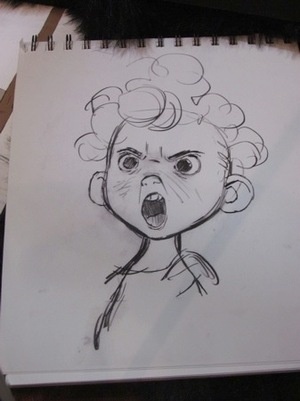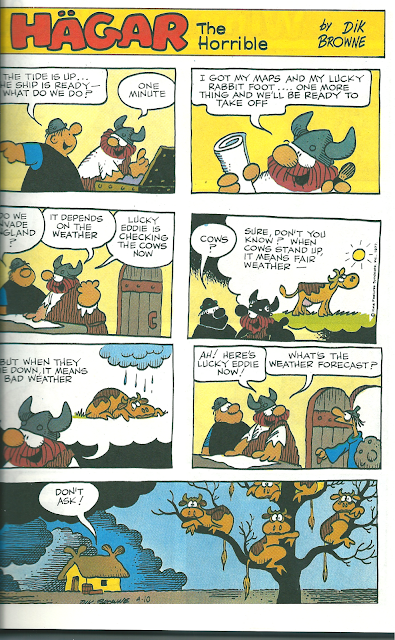For Unit 4 of Graphic Communication, the brief was “combinations and alliances”, so first I explored a few ideas based on this theme through the medium of brainstorms. At first I planned for my final piece to be a comic as I had done for my previous three units, particularly because I felt that such a medium fitted the theme well, since traditionally comics are a combination of pictures and words. I studied various comic strips and did a few artist copies of the characters from them, especially to help develop my ideas with both the style I would use for my final piece, and the design of the characters that would be involved. Although not long after this I decided to change my form and subject matter from comics to concept art and design for a fictitious film, it still aided me on the rest of my journey to my final piece. The reason I changed from comics to concept art for a film was because I felt that changing the angle I was coming from would help bring fresh ideas to mind.
I studied such concept art as from various Pixar films, such as “Brave” and “The Incredibles”, as well as Dreamworks’ “How to Train Your Dragon”; one part of creating concept as evidenced by some of the concept art of “Brave” was to build a model of one of the main characters. So, after creating some rough ink drawings of the designs I wanted the main characters of my ‘film’ to have, I created a model out of Plasticine of Blue, one of the leading roles, then drew some sketches based on the model. This helped establish his design, as well as the pose he would have in the final piece itself.
After some deliberation, I named the film “Epiphany”, wrote up a brief synopsis of the film, then decided to focus on the environments and scenery that might feature in the piece of concept art I planned to create for the final piece. The concept art from “Brave”, “The Incredibles” and “How To Train Your Dragon” that I had been studying all contained not only character designs and separate setting designs, but also contained actual concepts of key scenes that would occur in the movie. Taking inspiration from this, I decided that my final piece would be this kind of concept art: I decided that for my final piece, I would depict a key scene from “Epiphany”. I chose to depict the scene where the characters from the fantasy world first meet with their author during their endeavours to form an alliance with her, which would occur in the “real” world in which the author lives.
I established in the synopsis that “Epiphany” would have two parallel worlds as the main settings: one would be a magical, fantasy world, which I aimed to portray as natural and untouched by technology, and the contrasting “real” world (Earth), which would be portrayed as a much more industrial and artificial place without magic. These starkly contrasting worlds collide when the fantasy world characters manage to create a portal combining their world with Earth. Then I began to experiment through different mediums, including Photoshop, chalk pastels, and even paper cutting, how I could depict the setting and its atmosphere effectively. I experimented not just with scenery, but with weather and time of day too, and through this discovered that a rainstorm at night was the most dramatic and suiting to the scene I wanted to create from “Epiphany”.
Thanks to a recent trip to Edinburgh, I was inspired by the city and decided that while the “real” world in “Epiphany” would be shown as unnatural and industrialised, it could still be an environment beautiful in its own way; thus I decided to have the main location of the “real” world set in a beautiful, Edinburgh-esque city. Realising that the scene from “Epiphany” I wanted to create would occur in the “real” world, I took photos I took of Edinburgh and, after studying them and taking note of what I wanted to include in the city environment of this piece of concept art, set out to pencil the mock-up for my final piece.
For the actual exam, I drew and inked the concept art for “Epiphany” and scanned it into a computer and proceeded to colour the entire thing in Photoshop. Although I had coloured in Photoshop before, I took a risk because it was the first time I had done a complete picture with full shading, as well as colouring the actual lines in a darker version of the colour of whatever they depicted (for example, Blue’s hair is blue so I coloured the lines depicting his hair a dark blue). Previous experimentation in Photoshop allowed me to harbour new skills such as creating rain and a cloudy and starry sky effectively. Applying these and other techniques I had learnt and developed truly helped the final piece come together in the closest way possible to how I imagined it.
















































